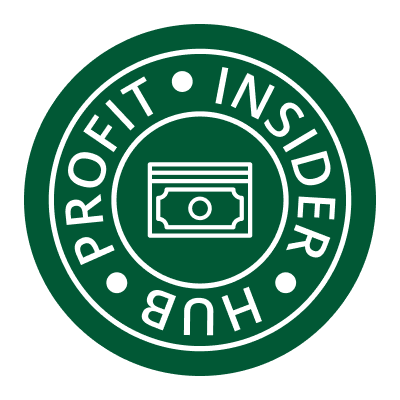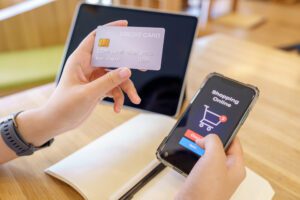Turning curious visitors into paying customers is the holy grail of online retail. While good design, product quality, and competitive pricing matter, they alone rarely guarantee sales.
The key is in creating a customer journey so clear and persuasive that it naturally leads to a purchase.
This is where ecommerce SEO services can quietly but powerfully influence buying behavior—helping your store attract not just any visitors, but the right kind of visitors who are already in a buying mindset. This isn’t about gimmicks or pushy sales tactics. It’s about understanding your audience, matching their intent, and presenting your products in a way that builds trust instantly. In this article, we’ll explore practical, experience-backed methods that can shorten the time between “just browsing” and “ready to check out.”
Why The “Browser to Buyer” Journey Matters
Think of your online store as a physical shop. People walk in, glance at shelves, pick up items, and sometimes leave without buying. In a store, a helpful layout, clear pricing, and friendly staff can change that. Online, those same principles apply—but they must be delivered through content, design, and seamless navigation.
A large percentage of ecommerce traffic is made up of casual browsers. Some are gathering ideas. Some are comparing prices. Others are unsure about what they want. Without strategies to guide them, most leave without adding anything to their cart.
The browser-to-buyer journey matters because:
It impacts revenue directly – Even small improvements in conversion rate can have significant effects on profits.
It improves return on investment – Every visitor you convert represents better use of your marketing spend.
It builds customer loyalty – A smooth buying experience encourages repeat business.
SEO plays a role at every stage by attracting shoppers whose needs match your products, presenting them with the right information, and removing the barriers that cause hesitation.
Targeting High-Intent Keywords
Not all keywords are created equal. Some indicate curiosity, while others signal a readiness to buy. If your goal is fast conversion, you should prioritize high-intent keywords.
Example:
Low intent: “types of running shoes” — This user is still researching.
Medium intent: “best running shoes for flat feet” — Closer to making a decision.
High intent: “buy Asics Gel Nimbus 25 online” — This person knows exactly what they want.
By creating pages and content optimized for these ready-to-buy phrases, you’re aligning your store with customers who are already deep into the purchasing stage. This eliminates much of the persuasion process and speeds up the sale.
To find high-intent keywords, analyze your current analytics, study competitor rankings, and use keyword research tools to spot terms with clear commercial intent.
Creating Product Pages That Sell
Your product pages are your online sales team. If they’re poorly optimized, visitors will lose interest, even if you’ve targeted the perfect keywords.
Here’s how to make them conversion-ready:
Headline clarity: Avoid vague product names. State exactly what the item is and who it’s for.
Benefits first: Don’t just list features; explain how they solve the customer’s problem.
Visual variety: Use multiple images, videos, and zoom features to mimic in-store inspection.
Trust markers: Display shipping information, warranties, and reviews where they’re easy to see.
A compelling product page anticipates and answers the buyer’s questions before they even have to ask. This reduces hesitation and moves them toward checkout faster.
Building Trust Through Content
Content marketing isn’t just for brand awareness—it can directly influence buying decisions. A visitor might arrive on your site through a blog post, then click through to a product and buy it the same day.
You can use content to:
Address doubts: “Is a memory foam mattress right for me?”
Provide comparisons: “Our Model A vs. Competitor Model B”
Offer guidance: “How to Choose the Perfect Desk Lamp for Your Workspace”
Adding content like mini-buying guides or FAQ sections right on the product page can prevent visitors from leaving to find answers elsewhere. Every time they go off-site, you risk losing them to a competitor.
Optimizing The Checkout Experience
Imagine filling a cart in a physical store, only to be faced with a long, confusing checkout process. You’d probably walk away. The same applies online—only faster.
To speed up conversions:
Keep checkout steps minimal—ideally, one page or two at most.
Allow guest checkout to avoid forcing account creation.
Display all costs upfront to avoid surprise fees.
Provide multiple payment options, including mobile wallets.
Also, ensure the checkout is mobile-friendly. More than half of ecommerce transactions now happen on mobile devices, and a clunky form or slow-loading payment page can instantly kill a sale.
Tracking And Refining Conversion Paths
Even the most well-planned strategy benefits from fine-tuning. By tracking how visitors navigate your site, you can see where they hesitate or drop off.
Key tools include:
Heatmaps to see where people click and scroll.
Session recordings to watch real user behavior.
A/B testing to compare different page versions.
Small tweaks, like moving a “Buy Now” button higher on the page or rewording a call-to-action, can yield surprisingly big improvements in conversion rates.
The Psychological Side Of Conversions
While SEO brings visitors in, psychology closes the sale. Certain triggers make people more likely to act quickly:
Scarcity – Limited stock messages or time-limited offers can prompt faster decisions.
Social proof – Reviews, ratings, and user photos show that others trust your product.
Authority – Demonstrating expertise in your niche increases perceived reliability.
When combined with strong SEO and optimized product pages, these elements can push a buyer from “thinking about it” to “purchased” in one visit.
Conclusion
Converting browsers into buyers quickly isn’t about luck—it’s about creating an intentional buying journey. From targeting high-intent keywords to crafting persuasive product pages, building trust with content, and ensuring checkout is seamless, every step should reduce friction and increase confidence.
The most effective ecommerce SEO services do more than improve rankings—they align your store’s structure, messaging, and user experience to match the psychology of ready-to-buy customers.
When your store consistently delivers clarity, trust, and ease, it becomes more than just a place to shop—it becomes the Authority Lighthouse in your niche, guiding customers to the right decision with confidence and speed.
FAQs
How Fast Can SEO Changes Start Turning Visitors Into Buyers?
Some updates, like clearer product descriptions or adding trust signals, can boost conversions almost immediately. Ranking for high-intent terms takes longer—weeks to months—but has lasting impact.
Are Paid Ads Faster Than SEO For Conversions?
Paid ads can bring instant traffic, but SEO builds a steady flow of qualified visitors without ongoing costs. Ideally, both should work together.
What’s The Most Overlooked Conversion Factor?
Transparency. Hiding details like shipping costs or return policies creates doubt and kills sales.
Should I Use Pop-Ups To Increase Conversions?
Carefully. An exit-intent pop-up with a discount can work, but too many pop-ups damage user trust.
Can Social Proof Really Boost Sales?
Yes. Seeing that others have bought and enjoyed the product reassures buyers and accelerates decision-making.

